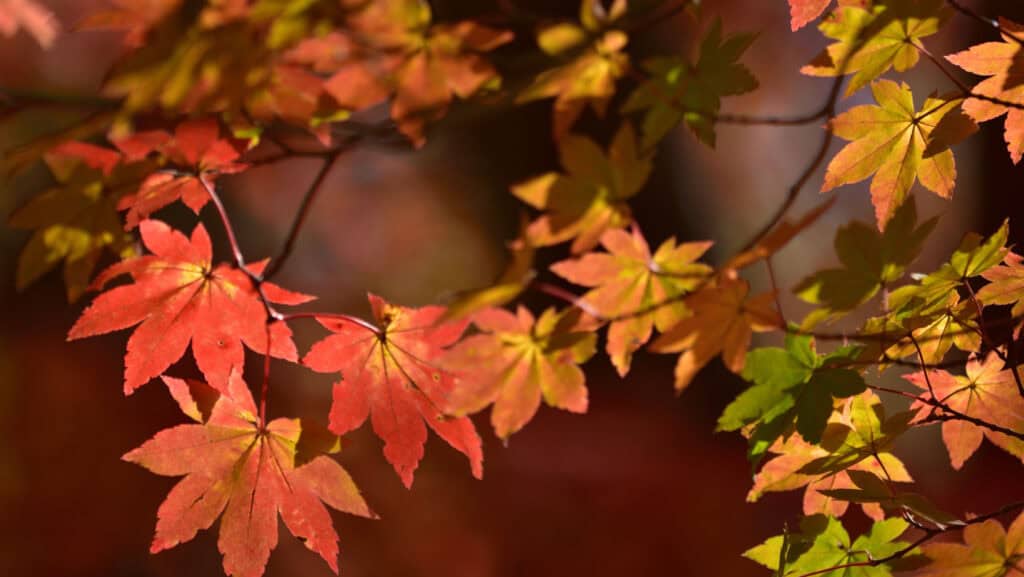The Science of Fall Foliage: Why Leaves Change Color
Behind every autumn leaf lies a chemical shift—chlorophyll fading, carotenoids glowing, anthocyanins rising—that turns survival into spectacle.
Every autumn, landscapes across much of the world transform into brilliant displays of red, orange, and gold. People plan road trips, festivals, and even vacations around this spectacular shift, but few stop to consider exactly why it happens. The science of fall foliage is a fascinating story of chemistry, sunlight, and survival. Understanding how leaves change color adds a deeper appreciation for one of nature’s most beautiful shows.
The Role of Chlorophyll
During spring and summer, leaves are green because of chlorophyll, the pigment that allows plants to capture sunlight and turn it into energy. Chlorophyll is incredibly efficient at absorbing light, especially in the blue and red parts of the spectrum, which is why leaves appear green to our eyes.This green is a sign of active photosynthesis, the process by which plants convert light, water, and carbon dioxide into food.
Chlorophyll is constantly being produced and broken down in leaves throughout the growing season. As long as days are long and warm, the plant keeps replenishing it. When autumn arrives, however, the balance shifts.
The Trigger of Shorter Days

The most important signal for trees is the change in day length. As days become shorter, trees sense the seasonal shift. In response, they begin to prepare for winter by slowing down their food-making machinery. Chlorophyll production decreases, and as the existing chlorophyll breaks down, the green fades away.
This is when the hidden pigments that were in the leaf all along begin to shine. Without chlorophyll to dominate the leaf’s color, other compounds reveal themselves, creating the warm hues we associate with fall.
Carotenoids and Yellows
Carotenoids are pigments that produce yellow and orange colors. They are present in leaves year-round but are usually masked by the strong green of chlorophyll. When chlorophyll fades, carotenoids step into view, giving us the golden yellows of birches, hickories, and aspens. These pigments are also the reason carrots and corn have their distinctive colors.
Anthocyanins and Reds
While carotenoids are always present, anthocyanins are different. These pigments are produced in the fall, often in response to bright sunlight and cool nights. Anthocyanins give leaves their red, purple, and crimson shades. Maples are particularly famous for their brilliant reds, which can vary from tree to tree depending on genetics and environmental conditions.
The production of anthocyanins is not fully understood, but many scientists believe they serve as protection. By absorbing excess light, they may help leaves recover nutrients before dropping, or they may act as a deterrent to pests. Regardless of their evolutionary purpose, anthocyanins are responsible for some of the most breathtaking fall colors.
Weather’s Role in Color Intensity
The vibrancy of a fall season often depends on weather patterns. Warm, sunny days followed by cool, crisp nights produce the best reds because these conditions boost sugar levels in the leaves, which in turn increases anthocyanin production. If autumn is cloudy or unusually warm, colors can be muted. Early frosts, on the other hand, may cause leaves to die and fall before they have a chance to reach their peak color.
Rainfall also plays a role. A dry summer may stress trees, leading to early leaf drop, while a wet season can promote healthy foliage that lasts longer. Every year is slightly different, which is why foliage reports become a seasonal staple for travelers planning their viewing.
Why Trees Shed Their Leaves

Beyond the dazzling colors lies the practical reason for this transformation. Shedding leaves is a survival strategy. Winter brings freezing temperatures and shorter days, making photosynthesis inefficient. By dropping leaves, trees conserve water and energy. The color change is essentially a sign that the tree is sealing off each leaf, reclaiming nutrients like nitrogen and phosphorus, and preparing for dormancy.
Regional Variations
Different parts of the world showcase fall foliage in unique ways. New England is famous for its fiery maples, while the Rockies highlight brilliant aspens that shimmer in golden waves. In Japan, the tradition of momijigari, or leaf hunting, celebrates the crimson hues of Japanese maples. Europe offers its own palette, with oaks and beeches providing deep browns and golds.
The timing of peak foliage varies depending on latitude, altitude, and local climate. In the United States, northern states turn earlier, while southern regions may not see their peak until November or later.
The Beauty of Science
When we admire autumn leaves, we are really witnessing a shift in chemistry and plant physiology.The greens of summer give way to hidden yellows and oranges, while reds are newly created as part of the season’s preparation for winter. Science explains the process, but it does not diminish the magic. If anything, it makes the annual show more remarkable, reminding us that beauty often arises from adaptation and survival.







